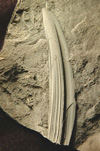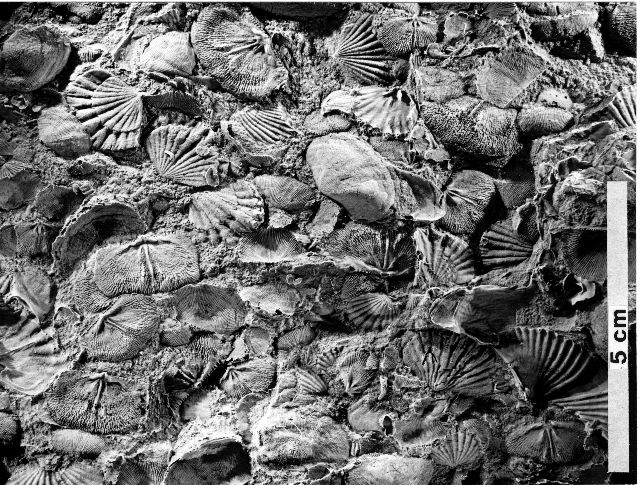A sea of fossils

 (112 kb) Many tourists, however, are unaware that it is also a “sea of fossils”, a phrase that alludes to the formation of the region’s sedimentary rocks in an ancient ocean, long-ago disappeared, and to its wealth of fossils and other clues to past life. It represents a natural heritage that is celebrated by geologists and paleontologists around the world.
(112 kb) Many tourists, however, are unaware that it is also a “sea of fossils”, a phrase that alludes to the formation of the region’s sedimentary rocks in an ancient ocean, long-ago disappeared, and to its wealth of fossils and other clues to past life. It represents a natural heritage that is celebrated by geologists and paleontologists around the world.Kilometres of thick sedimentary layers hold the memory of the evolution of land and ocean along the ancient Laurentian margin during the Paleozoic Era, essentially representing a 200-million-year window on the history of the Canadian Maritime Provinces.

 (136 kb)Gaspesian fossils reflect pivotal events and key stages in the evolution of life, from the explosion of diversity among living creatures in Cambrian seas, to the beginning of the Carboniferous, when the Earth was covered by vast humid forests and reptiles began their extraordinary evolutionary adventure.
(136 kb)Gaspesian fossils reflect pivotal events and key stages in the evolution of life, from the explosion of diversity among living creatures in Cambrian seas, to the beginning of the Carboniferous, when the Earth was covered by vast humid forests and reptiles began their extraordinary evolutionary adventure.The Gaspé region includes innumerable fossil sites filled with a great variety of marine and even terrestrial invertebrates, as well as layers famous for the Devonian plants they contain.

 (36 kb)Vertebrates are also well represented, with many sites containing Silurian and Devonian fish. Access to all the rocks of this vast territory is a fairly recent accomplishment, and there has not yet been enough time to describe every fossil species found in the Gaspé. Odds are that the region still holds many surprises for paleontologists from Quebec and around the world!
(36 kb)Vertebrates are also well represented, with many sites containing Silurian and Devonian fish. Access to all the rocks of this vast territory is a fairly recent accomplishment, and there has not yet been enough time to describe every fossil species found in the Gaspé. Odds are that the region still holds many surprises for paleontologists from Quebec and around the world!Site map | Feedback | Links | Sources | Credits
A sea of fossils
<< The birth of the Appalachians | Faunal realms >>

Title: Gaspestria genselorum
Author: Parc national de Miguasha
Sources: Parc national de Miguasha
Year: 2005
Description:
This millipede was part of a community of land-dwelling invertebrates that lived at the end of Lower Devonian time among the remarkable flora that is characteristic of the Battery Point Formation on the Gaspé Peninsula.

Title: A very shell-rich bed
Author: Parc national de Miguasha
Sources: Parc national de Miguasha
Year: 1991
Description:
An example of a bed with abundant shelly marine fossils in the Lower Devonian Gaspé Sandstone. The species include the brachiopods Loreleiella cf. jahnkeiû, Leptocoelia flabellites and Gaspespirifer gaspensis.



